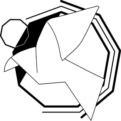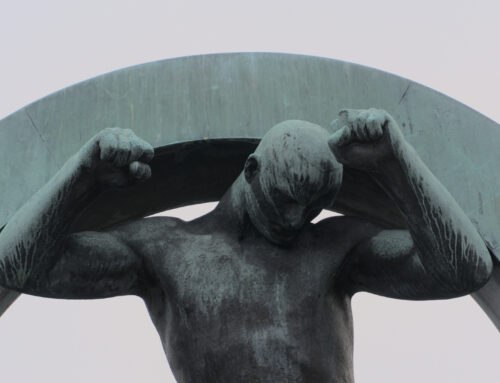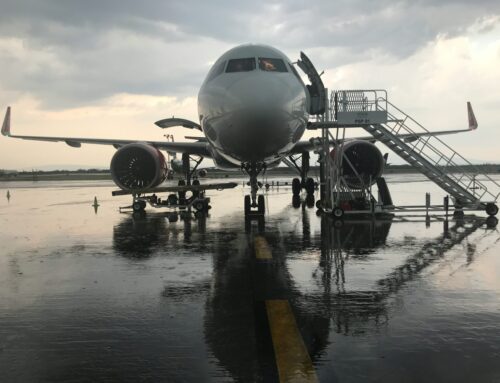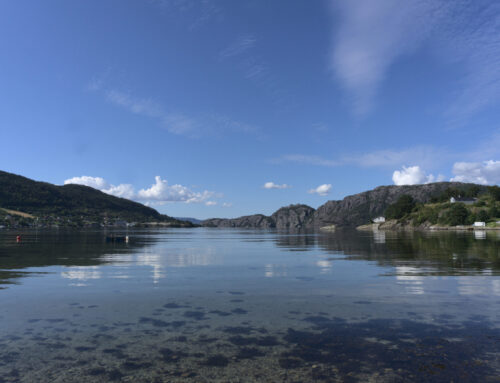Last time I announced – with no lack of enthusiasm – that I would be spending a week in the mountains. I was heading to Jotunheimen national park.
It’s now October and my summer adventure feels like a long time ago. I have the pictures to prove that I did it (An adventure in the mountains). But this is not going to be boring recount of my summer seen through rose-tinted glasses. Who would read that?
Let’s just say that I had no idea what I had signed myself up for. I am a strong believer that you learn best when outside of your comfort zone. This is about dealing with set-backs and challenges, and looking at what you can learn.
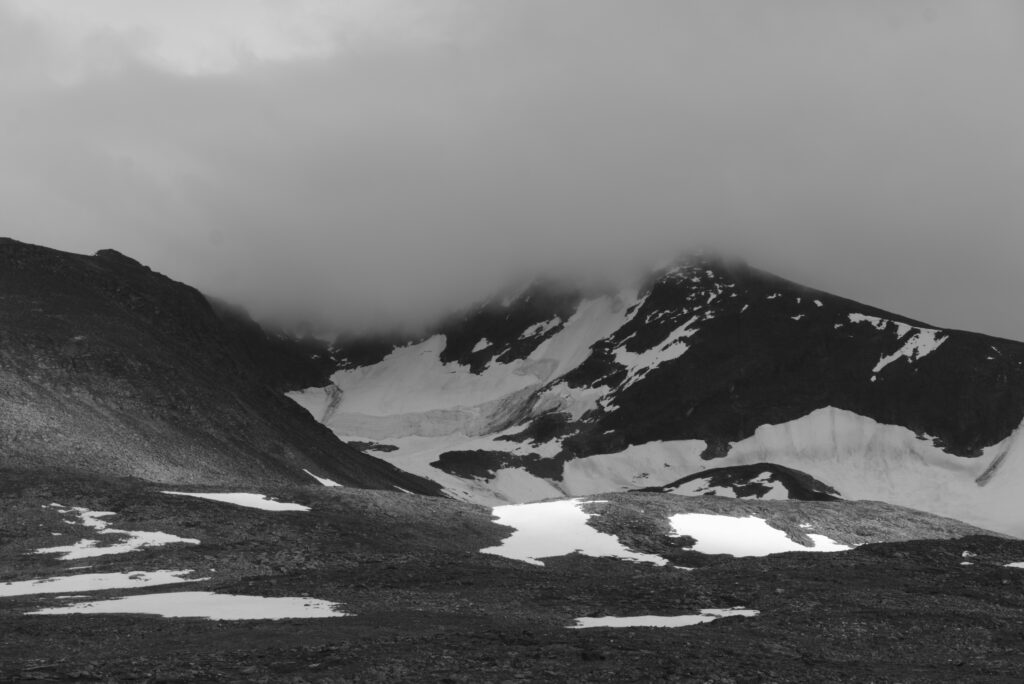
Out of sight, by Eleanor Smith
First challenge: No prior experience
I had signed up to an Alpine climbing course for a whole week in the Norwegian mountains. I only had sports climbing gear and felt amateurish when everyone else started getting out their traditional (trad) climbing gear. The introduction course I had planned to go on first in May having been cancelled, I basically had no prior experience.
We were split up into two groups and I spent a lot of time setting bolts (called “nuts” and “cams”) into different types of cracks in the rock (see an example here). I top-roped a couple of routes to practice setting in bolts in a safe way. I then learned how to set up a top anchor and rappel/abseil down the wall. I somehow managed to miss when the other two went through routines for climbing several rope lengths and only got the end of it. It’s alright, I wouldn’t need it for this trip.
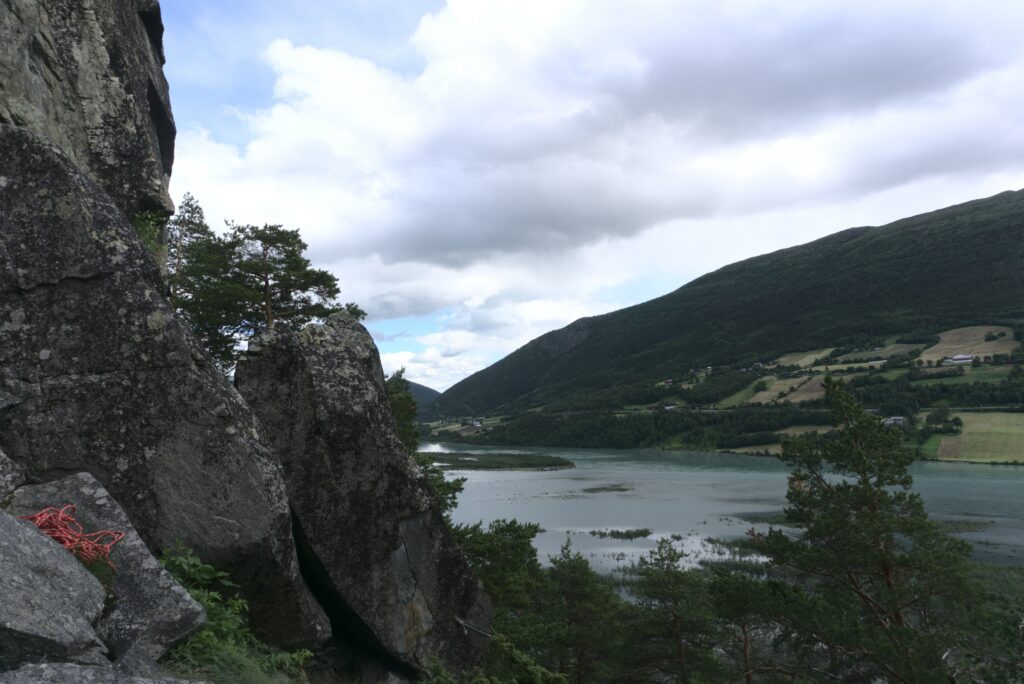
Klatring i Lom, by Eleanor Smith
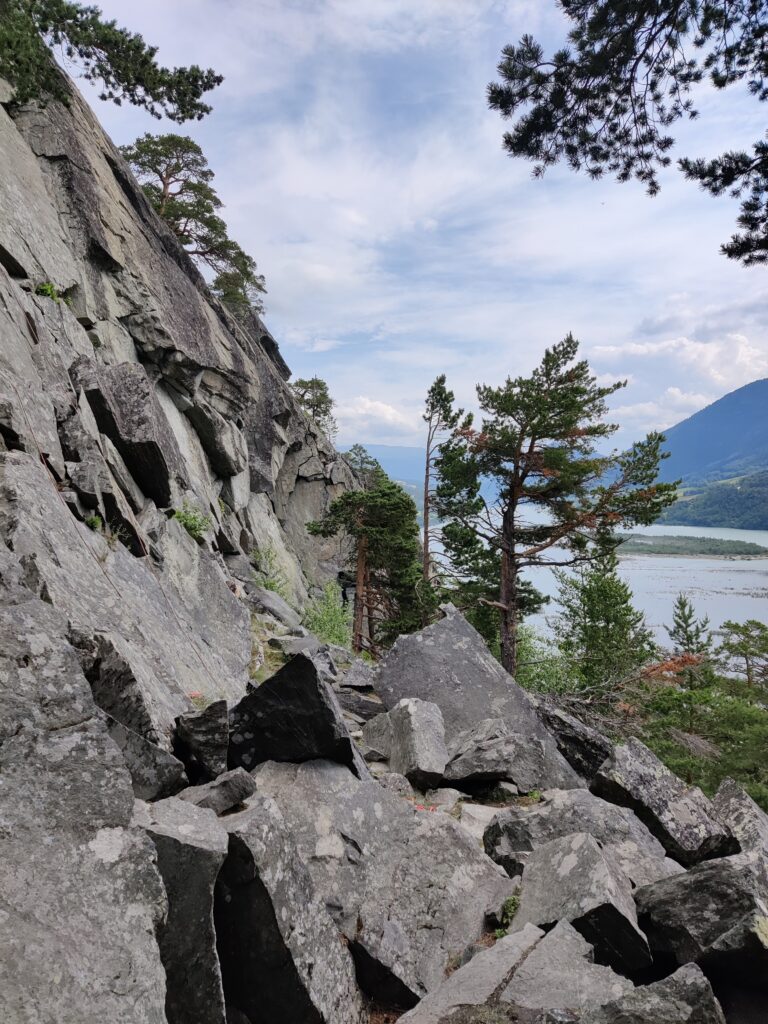
Climbing wall in Lom, by Eleanor Smith
Second challenge: Weather
The second day was the day with the best weather for the whole week. Our instructors decided it was the day for us to do some alpine climbing. It was going to be a long day, probably 12h altogether.
We were going to go up to Smørstabbtindene and cross a mountain ridge to go down the other side.
That night it was so wet and windy that I woke up many times in my tent, worried that it was going to blow over. Luckily it didn’t but someone else’s did. Needless to say, I was less than rested when we departed at 8 o’clock the following morning. I had also been drinking water from the glacier for a couple of days and had a bad tummy. Not the best start.
The first three hours were spent hiking with heavy backpacks in what turned into increasingly cloudy and wet weather. My shoes were not good on the snow (and too soft for the crampons!) and I was cold and tired by the time we got our climbing gear and the ropes out. The instructors taught us how to walk together attached to a rope and to secure ourselves as we went. I got my camera out and captured the magical atmosphere and views. I cheered up and felt more in my element.

A taste of mountain climbing, by Eleanor Smith
We reached a peaceful and very quiet spot where we took a break. Out of nowhere, I saw a face in the rock. A two-faced God stood out in the mist, looming above me.
The life of a mountaineer is one of risk and adventure. Yet it is also one of alertness and respect for the mountain. We are but small fragile fleshy beings in a huge world of rock and snow and ice. The mountains remind us of our place, like astronauts on the moon.
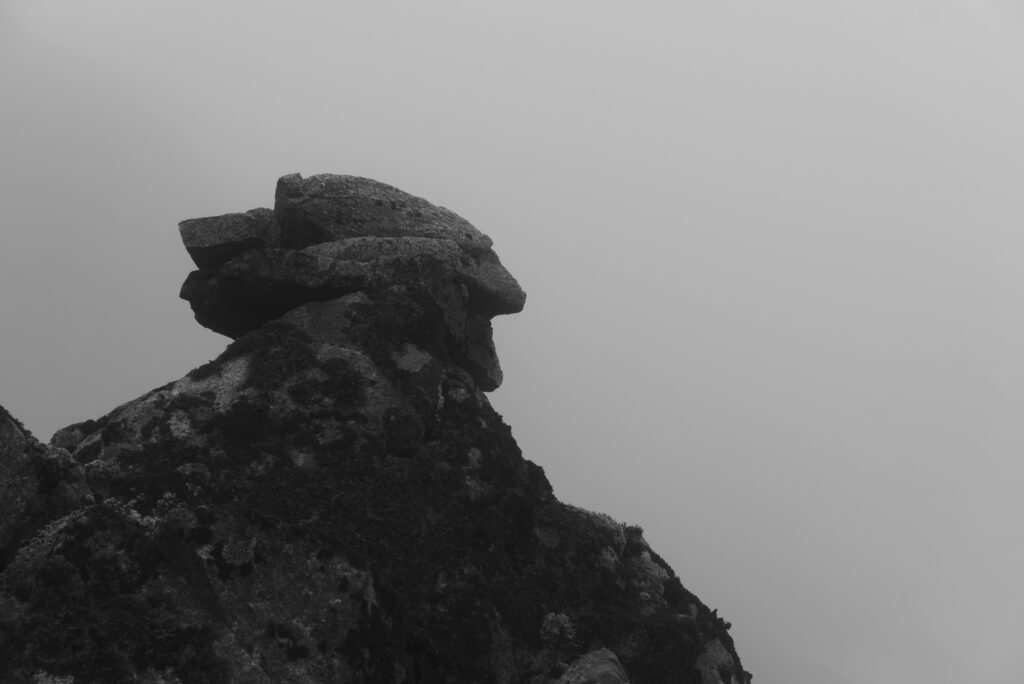
Double face, by Eleanor Smith
A few metres past that spot, we stopped to put on our crampons and get out our ice axes. The way ahead was a steep snowy slope up to the top of the next ridge. This was the most impressive sight I had ever seen. Were we really going to climb that?
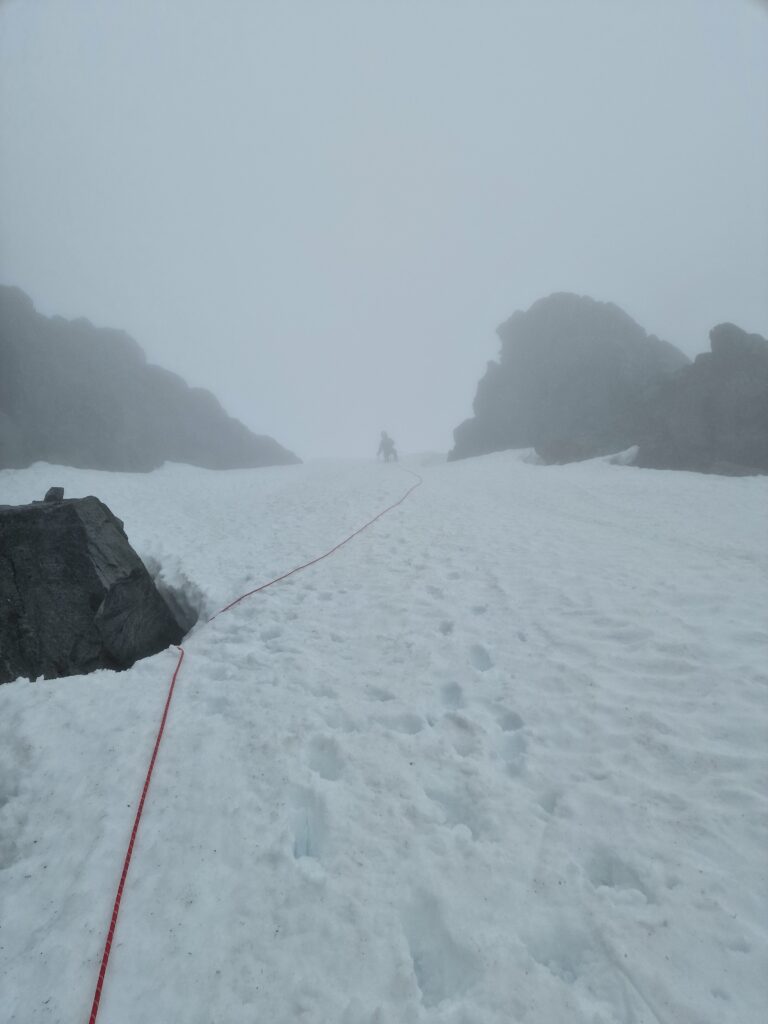
The way up, by Eleanor Smith
Our instructors strode off ahead in leaps and bounds to secure the rope for us to follow. The weather turned for the worse and it started to snow, hail and rain.
The first part was fine but I got exhausted on the second part of the climb. I kept going down into the deep snow and having to haul myself back out and keep going. When we reached the next anchor, the other instructor called down to us that the weather was too bad for us to go over the top. We were going to have to turn back.
I remember being partly relieved as I was really struggling. Although it was steep and looked scary, I had no problem striding back down through the deep snow. After all I was on a rope and it’s easier to walk down in deep snow than up.
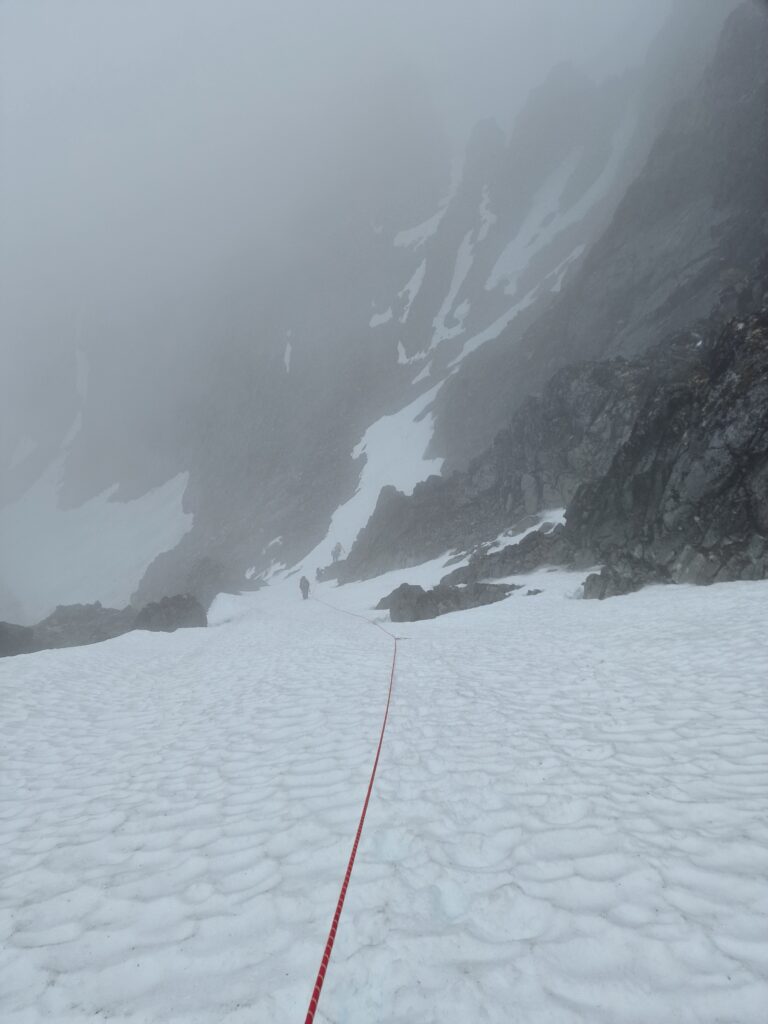
The way down, by Eleanor Smith
My group made fast progress downhill and once off the snow, we headed to another passage where we would be doing some climbing. This is what I had been looking forward to, so I was glad to get back into climbing mode.
I was freezing cold and did not have what I needed to stay warm (proper gloves and a down jacked). I badly needed to go to the toilet. That glacier water and my generally sensitive tummy were messing with me. Still, I was glad to be climbing and felt more positive again.
Third challenge: Speed
Despite being relatively fit and hiking every week, I felt that I was slower than the others. The climbing itself in the mountains wasn’t a problem.
But I was frustrated with the focus on speed and “efficiency” on the way up and especially down. How efficient would it have been if I had pushed too hard and broken a leg, I wondered?
I felt very non-Norwegian. Generally, I have found my place here and fit in. But with hiking, most Norwegian outdoor enthusiasts seem to like to walk at a faster pace than me.
Walking up to the mountain and down again, I struggled. I was very tired and the rocks were large and slippery. The pace was too fast for me and I felt pressured to go faster than I was comfortable going. At the cost of being singled out and made fun of, I tried to respect myself and go at a safe pace.
The instructors had a tough job with so many people to take care of in such bad conditions. They did a great job. I just didn’t have as great an experience as I had hoped.
A journey of ups and downs
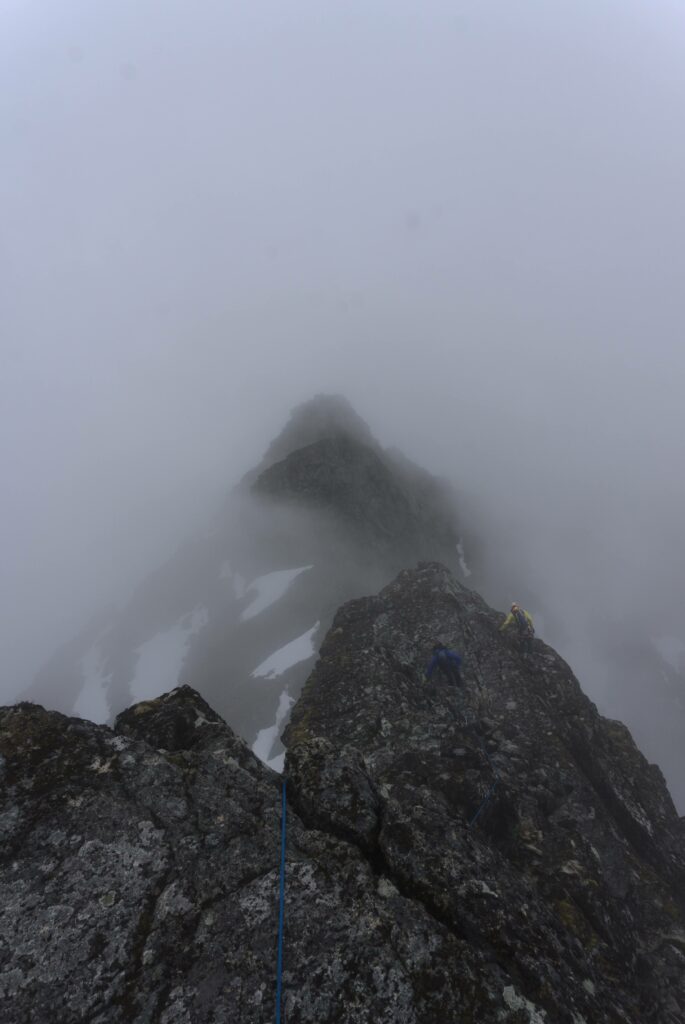
A journey of ups and downs, by Eleanor Smith
It was a journey of ups and downs. In short, when I was on a rope, climbing, I was in my element. Walking up to the mountain and down again, I struggled.
That’s the mountain for you. Unpredictable and challenging. You don’t know what you’ll meet when you set out. That’s part of the charm. Being out of your comfort zone. That’s how you learn. That’s how you grow.
I learnt a lot on this trip. I joked afterwards that I had been on a survival camp. It definitely felt like that to me!
My lowest point
When we got back to the campsite and were still being whipped by the wind and the rain, my week reached its lowest point. I was told by my fellow course mates that drinking glacial water was dangerous. The young women at the tourist centre obviously didn’t know that. At least it partly explained my poor form.
I was exhausted, wet, and cold and had to wait ages for my dinner as I struggled to use the cooker, alone in the car. Tears welled up in my eyes and I left voice messages to my partner who was at a birthday party. I felt utterly alone and miserable.
I finally ate and managed to get a shower in before the tourist centre shut. I decided I was not up for another day like that the following day. The three that did go back to the mountains left at 5 AM.
The rest of us spent a day on the glacier, Bøverbreen. I went from a low to a high as I had never been on a glacier before. I was in awe and grateful for a more relaxed day and pace. I got to take plenty of pictures and even try ice climbing.
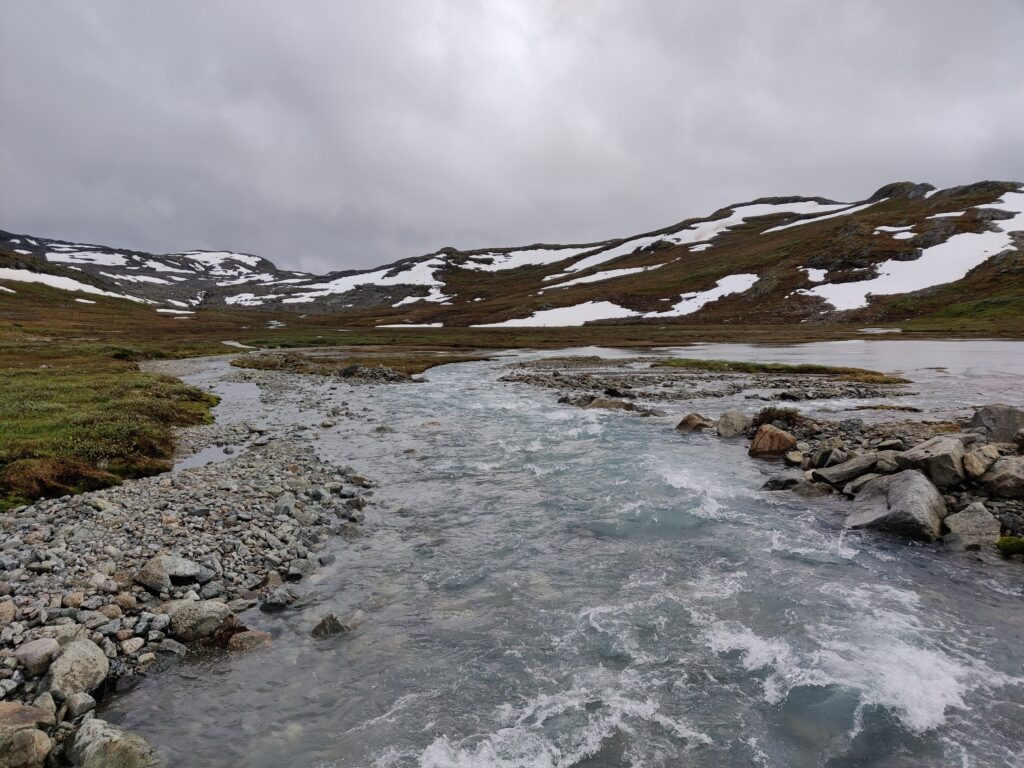
Krossbu campsite view, by Eleanor Smith
My high
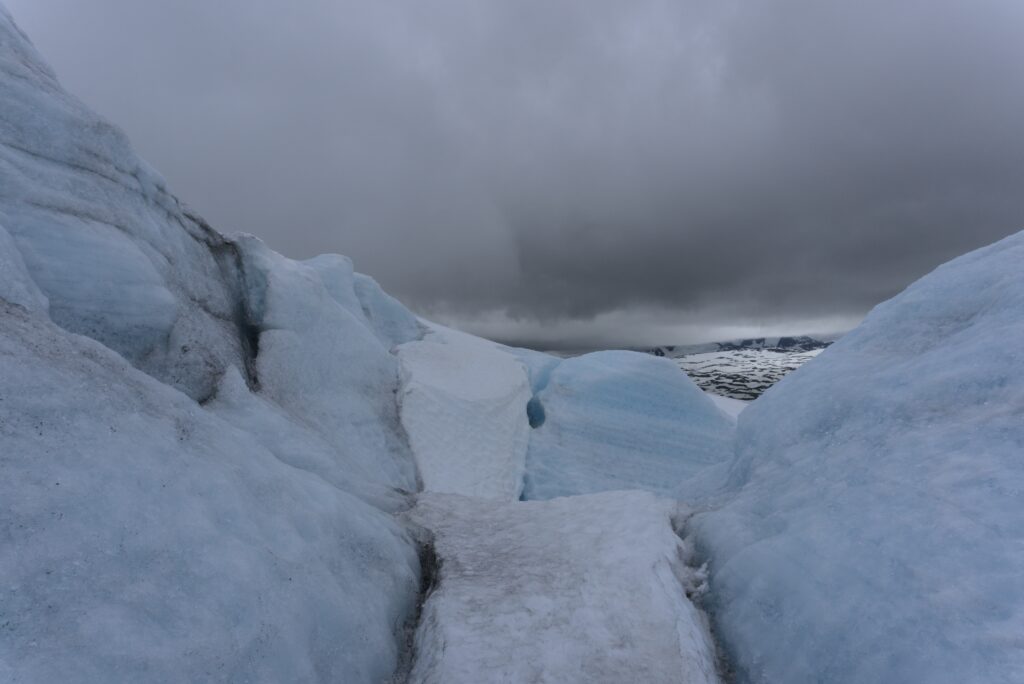
Landscape of ice, by Eleanor Smith
The following day, everyone went on the glacier and we learned how to safely walk on a glacier. I even got to try my hand at ice climbing as we were lowered down a crevasse. The next day, I got an introduction to how to save someone who has fallen down a crevasse. Again, due to poor weather, our training was cut short.
I had a great time on the glacier, both days. The beauty of it and learning something new. We practised using our crampons at different angles on the ice. And we all got to lead the team on the rope, putting in and taking out ice screws. This was fun and I challenged my fear of walking on snow. The ice is much more appealing as it’s solid while the snow on a glacier, well you never know how safe it is. That’s why you have an ice axe.
I challenged myself and the team by picking an adventurous route across the glacier. I was enthralled and my days on the glacier were the highlight of the week.
I cheered up and spent time with course companions in the evening at the campsite. We ate together, huddled under a tarpaulin fixed to the back of the car to avoid being drenched.
So what did I learn? What do I take with me?
Lessons learnt
The mountain in the summer in Norway can feel like autumn (or even winter!). We had minus degrees several nights and my sleeping bag was not warm enough. I had to borrow woollen blankets from the tourist centre and sleep with all my woollen clothes on and a hat.
Main takeaway messages:
- Go well prepared (it helps to know as much as possible about the course in advance)
- Be prepared for living out of the back of a car in the pouring rain (it’s a question of mindset)
- Have the necessary skills
- And the right gear (whether its nuts and cams or clothing gear such as a down jacket)
- Do not drink unsafe water (blue water from the glacier is a no-no)
- Do what you need to do to sleep more than 4h a night
- Have a thermos with you (preferably filled with hot coffee or tea).
Would I do this again? Yes, definitely!
I got to go on my trad introductory climbing course in August and I have practised on my own a couple of times since then. I have been on my first tall wall rock climb with an instructor.
Next time I will know what I am signing up for. Now I have the skills I need to start going mountaineering safely.
But this summer, I jumped in the deep end. As one of the instructors quite bluntly put it as I struggled in the deep snow, ‘you like the mountains but not the snow?!’
Challenge accepted! Next time, I’ll be properly prepared.
I’ll learn to like climbing through deep snow if that’s what it takes to reach the top of mountains.

Eye of the glacier, by Eleanor Smith
